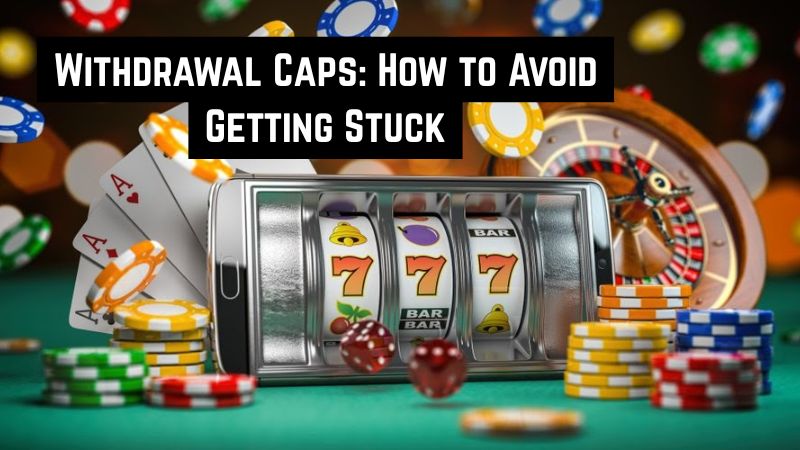When it comes to managing your finances, understanding withdrawal caps can save you from unexpected restrictions. A withdrawal cap is a limit placed on the amount of money you can withdraw from your account within a certain period, such as daily or monthly. These caps are common in many financial institutions and may apply to savings accounts, ATMs, or even credit cards. While they can help prevent fraud, they can also be frustrating when you need access to your funds. Let’s explore how to avoid getting stuck by understanding withdrawal caps and how to manage them effectively.
What Are Withdrawal Caps?
A withdrawal cap is essentially a limit imposed by a bank, financial institution, or credit card provider on the amount of money you can withdraw over a specific time frame. These caps are meant to protect both the financial institution and the customer. For example, banks might set a cap on ATM withdrawals to reduce the risk of large-scale fraud or unauthorized access to your account. Withdrawal limits can vary greatly depending on your account type and the bank’s policies.
Why Do Banks Implement Withdrawal Caps?
Banks implement withdrawal caps for several reasons, with security being one of the main factors. By limiting the amount of money that can be withdrawn in a day or week, banks reduce the risk of fraud and unauthorized transactions. Withdrawal caps also help prevent customers from over-spending or draining their accounts too quickly. Additionally, limits help banks manage liquidity and ensure that enough cash is available for all customers. While this may be inconvenient at times, it’s also a protective measure for your own financial security.
Different Types of Withdrawal Caps
Withdrawal caps come in different forms, depending on the type of transaction you are making. Common types of withdrawal caps include:
- ATM Withdrawal Limits: Most banks impose a daily or weekly withdrawal cap on ATM transactions. This limit varies, with some institutions offering a cap as low as $200 per day, while others may allow up to $1,000.
- Online Transfers: Many banks have caps on the amount you can transfer online. These limits are often put in place to prevent unauthorized transfers.
- Credit Card Cash Advances: When using a credit card to withdraw cash, you may face daily withdrawal limits. These are typically lower than the available credit limit and come with additional fees.
- Over-the-Counter Withdrawals: Some banks impose limits even on in-person withdrawals at the branch, especially for high-risk transactions.
How to Check Your Withdrawal Limits
To avoid getting caught off guard, it’s important to check your withdrawal limits regularly. Most banks provide this information through their mobile apps, websites, or by calling customer service. Here are a few ways you can check your limits:
- Bank’s Mobile App: Many banks display withdrawal limits within their app, often in the account settings or transaction history section.
- Online Banking Portal: Log into your online banking account, where withdrawal limits are usually displayed under the account details section.
- Customer Service: If you’re unsure about your withdrawal limits, simply call your bank’s customer service for clarification.
- ATM: When attempting to withdraw money from an ATM, the system will inform you if you’ve hit your daily limit.
How to Avoid Hitting Your Withdrawal Cap
Knowing your withdrawal limits is the first step in avoiding any issues with accessing your funds. Here are a few strategies to ensure you don’t get stuck:
- Plan Ahead: If you know you’ll need to withdraw a large amount of cash, plan in advance. Ensure that your withdrawal limits allow for the necessary funds or make withdrawals ahead of time to avoid hitting your cap unexpectedly.
- Use Multiple Accounts: If you have multiple accounts, you can often withdraw from each account within the same day. Be mindful of the limits for each account to avoid hitting a cap on all of them simultaneously.
- Opt for Larger Withdrawals: If your bank allows for larger withdrawals, consider taking out a bigger sum at once. This will help you avoid making frequent, smaller withdrawals that may add up to hitting the limit.
- Request a Limit Increase: Some banks will allow you to request an increase in your withdrawal limit, especially if you have a good relationship with the bank. This can be helpful if you frequently need to withdraw larger amounts.
- Transfer Funds Online: If you can’t access cash through an ATM or over-the-counter withdrawal, consider transferring money between accounts online. This often bypasses the need to withdraw cash and allows more flexibility.
What to Do If You Hit Your Withdrawal Limit
If you’ve reached your withdrawal cap and still need money, don’t panic. There are a few solutions to help you avoid getting stuck:
- Wait Until the Next Period: Most withdrawal caps reset after 24 hours or on a monthly basis. If you don’t urgently need the funds, you can simply wait until your withdrawal limit resets.
- Use Another Method of Payment: If you’ve reached your cap, consider using a credit card, debit card, or digital payment method to make purchases instead of withdrawing cash.
- Visit a Bank Branch: In some cases, you may be able to make an over-the-counter withdrawal at a branch. This may have different limits than ATMs and could give you access to the funds you need.
- Request an Increase: If you find yourself hitting the withdrawal limit regularly, consider asking your bank to raise the cap. Some banks offer temporary increases or permanent adjustments based on your needs.
Benefits of Managing Your Withdrawal Caps
Managing your withdrawal caps effectively can have several benefits:
- Security: By staying within your withdrawal limits, you minimize the risk of fraudulent activity and unauthorized access to your account.
- Better Budgeting: Withdrawal limits can help you stick to a budget by limiting how much cash you can access in a short period.
- Peace of Mind: Knowing your limits and how to navigate them reduces stress and confusion, ensuring that you’re always prepared when you need to access your funds.
Final Thoughts on Avoiding Withdrawal Cap Issues
Withdrawal caps can be a hassle when you need money quickly, but understanding them and planning ahead can help you avoid getting stuck. By knowing your limits, using multiple accounts, and being proactive in managing your finances, you can stay in control of your money and ensure you have access to funds when needed. Always remember that banks put these caps in place for security, and with a little preparation, you can work around them without any issues.



